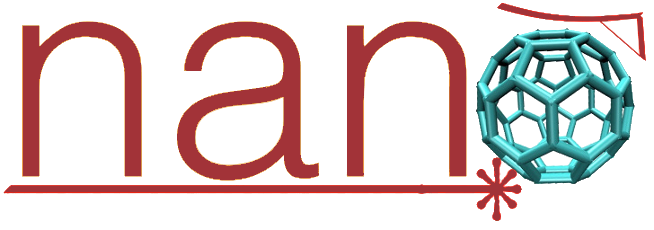M. R. Valentim, M. J. S. Matos, and M. S. C. Mazzoni, “
B2N2O2: A wide-bandgap two-dimensional semiconductor featuring a zigzag nitrogen array of bonds,”
Applied Physics Letters, vol. 123, no. 9, pp. 093103, 2023.
Publisher's VersionAbstractIn this work, we apply a combination of theoretical techniques to characterize a two-dimensional material with formula B2N2O2, featuring a zigzag array of nitrogen atoms. We predict its energetic, thermal, and dynamic stability and determine its electronic properties, including band structure and mobility evaluation for a phonon-mediated mechanism. We show that the compound is a wideband-gap semiconductor, with parabolic band edges and with large electron and hole mobilities within the deformation potential approach. We ascribe this result to the existence of electronic channels defined by the zigzag array of nitrogen bonds, which define the edges of both conduction and valence bands. We also propose a mechanism to synthesize the compound based on oxygen functionalization and application of pressure. Finally, we show that the results can be generalized to represent a family of 2D compounds.
L. G. P. Martins, et al., “
Pressure tuning of minibands in MoS2/WSe2 heterostructures revealed by moiré phonons,”
Nature Nanotechnology, 2023.
Publisher's VersionAbstractMoiré superlattices of two-dimensional heterostructures arose as a new platform to investigate emergent behaviour in quantum solids with unprecedented tunability. To glean insights into the physics of these systems, it is paramount to discover new probes of the moiré potential and moiré minibands, as well as their dependence on external tuning parameters. Hydrostatic pressure is a powerful control parameter, since it allows to continuously and reversibly enhance the moiré potential. Here we use high pressure to tune the minibands in a rotationally aligned MoS2/WSe2 moiré heterostructure, and show that their evolution can be probed via moiré phonons. The latter are Raman-inactive phonons from the individual layers that are activated by the moiré potential. Moiré phonons manifest themselves as satellite Raman peaks arising exclusively from the heterostructure region, increasing in intensity and frequency under applied pressure. Further theoretical analysis reveals that their scattering rate is directly connected to the moiré potential strength. By comparing the experimental and calculated pressure-induced enhancement, we obtain numerical estimates for the moiré potential amplitude and its pressure dependence. The present work establishes moiré phonons as a sensitive probe of the moiré potential as well as the electronic structures of moiré systems.
J. P. N. Marinho, et al., “
Nanostructured system based on hydroxyapatite and curcumin: A promising candidate for osteosarcoma therapy,”
Ceramics International, 2023.
Publisher's VersionAbstractOsteosarcoma is the most common type of bone cancer. Despite therapeutic progress, survival rates for metastatic cases or that do not respond well to chemotherapy remain in the 30% range. In this sense, the use of nanotechnology to develop targeted and more effective therapies is a promising tool in the fight against cancer. Nanostructured hydroxyapatite, due to its biocompatibility and the wide possibility of functionalization, is an interesting material to design nanoplatforms for targeted drug delivery. These platforms have the potential to enable the use of natural substances in the fight against cancer, such as curcumin. Curcumin is a polyphenol with promising properties in treating various types of cancer, including osteosarcoma. In this work, hydroxyapatite (n-HA) nanorods synthesized by the hydrothermal method were investigated as a carrier for curcumin. For this, first-principle calculations based on the Density Functional Theory (DFT) were performed, in which the modification of curcumin (CM) with the coupling agent (3-aminopropyl) triethoxysilane (APTES) was theoretically evaluated. Curcumin was incorporated in n-HA and the drug loading stability was evaluated by leaching test. Samples were characterized by a multi-techniques approach, including Fourier transform infrared spectroscopy (FTIR), UV–visible spectroscopy (UV–Vis), X-ray diffraction (XRD), X-ray fluorescence spectrometry (FRX), thermogravimetric analysis (TGA), differential scanning calorimetry (DSC), zeta potential analysis (ζ), X-ray photoelectron spectroscopy (XPS) and transmission electron microscopy (TEM). The results show that n-HAs with a 90 nm average size were obtained and successful incorporation of curcumin in the nanostructure was achieved. Cell viability and the number of osteosarcoma cells were decreased by CMAP-HA treatment. Furthermore, the stability test suggests that hydroxyapatite nanoparticles present great potential for the transportation of curcumin in the bloodstream, crediting this system for biological performance evaluations aiming at the treatment of osteosarcomas. Keywords: nanostructures, curcumin, hydroxyapatite, osteosarcoma.
L. G. P. Martins, R. Comin, M. J. S. Matos, M. S. C. Mazzoni, B. R. A. Neves, and M. Yankowitz, “
High-pressure studies of atomically thin van der Waals materials,”
Applied Physics Reviews, vol. 10, no. 1, pp. 011313, 2023.
Publisher's Version 